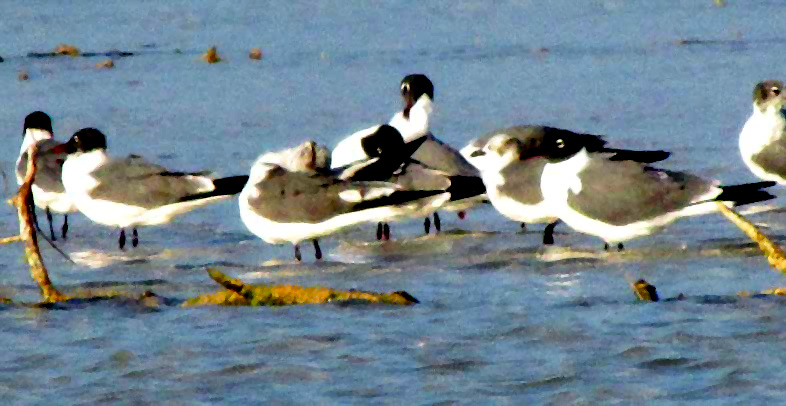Excerpts from Jim Conrad's
Naturalist Newsletter
from the March 29, 2015 Newsletter issued from Río Lagartos, on the north-central coast of Yucatán, MÉXICO
FRANKLIN'S GULLS IN THE YUCATAN
During the winter our most abundant gull here, by a long shot, is the Laughing Gull, which during early winter is a nondescript, dark-backed gull with a dingy head. Nowadays as spring approaches, the heads of more and more Laughing Gulls are abandoning their winter plumage and developing conspicuous, handsome, black "hoods."
This week gulls turned up displaying the same basic plumages as Laughing Gulls, but something about them was different. Some are shown below:

They're Franklin's Gulls, recognizable as such by the white spots near the tips of their wings. They're migrating north to their nesting grounds in south-central Canada and the north-central US, and are found here only during migrations. They're the common gull of the American prairies, and they've just overwintered along the Pacific coast of South America. In North America normally you don't have to worry about confusing Franklin's Gulls with Laughing Gulls because Franklin's Gulls occur in mid-continent, while Laughing Gulls are coastal.
It's a little surprising to see so many Franklin's Gulls here, for their main migratory route is along southern Mexico's Pacific coast, then northward through central and eastern Mexico. However, they're known to be rare winter visitors here along the Yucatan Peninsula's northern coast. Diego says that this year we're seeing an unusually high number of them.
Anyway, this is more proof that spring really is coming.